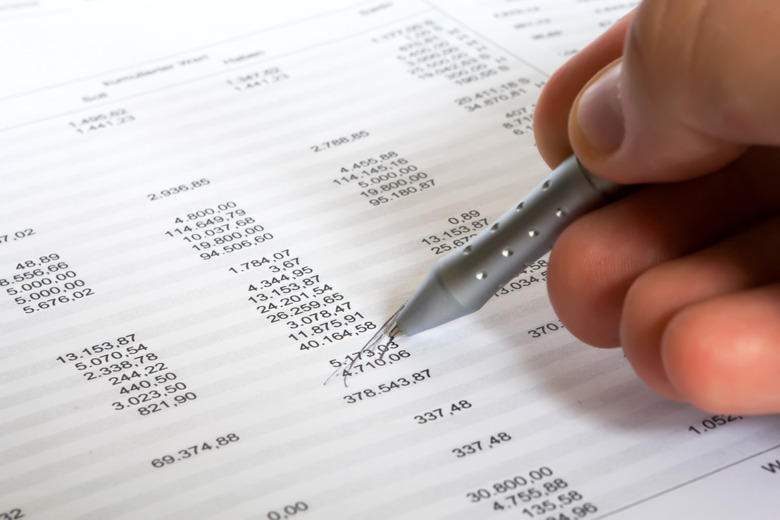How To Learn To Read Big Numbers
Most everyday numbers work for everyday experiences for the sake of meaningful and convenient communication. For example, because "one billion" is already a large number, people in the United States do not typically refer to very wealthy people as being worth trillions of pennies, even though pennies are familiar to virtually everyone in the U.S. By the same token, it is unusual for prefixes even in scientific fields to refer to numbers representing less than about a billionth of a commonly understood reference point. "Nano-," for example, refers to precisely this quantity.
In a world of rapidly expanding and accessible computer technology, however, large numbers get thrown around with aplomb. The disk storage capacity of computer hard drives, for example, is now sometimes given in terabytes, or trillions of bytes, a concept that would have been laughable even 30 years ago.
Most often, however, you will see large numbers given in powers of ten with a multiplier in front for example, 3.0 × 108 m/s is the speed of light in a vacuum in SI units.
To read such numbers out loud or to yourself in everyday terms, follow this scheme:
Step 1: Determine if the Number is in Scientific Notation
Step 1: Determine if the Number is in Scientific Notation
Such a number will include a prefix with a value between 1 and 10 (the digit term), and a 10 raised to a nonzero positive or negative exponent (the exponential term). The exponent of 10 is the number of places you move the decimal to yield a number in standard form.
Examples of such numbers are 7.45 × 107 and 6.3 × 10 −12.
Step 2: Adjust the Number if Necessary
Step 2: Adjust the Number if Necessary
Sometimes, the digit term will not be equal to or greater than 1 but less than 10. For example, you may see a number such as 13.8 × 103. In such instances, shift the decimal point to the left while increasing the exponent by one unit to compensate. Thus 13.8 × 103 becomes 1.38 × 104. Similar reasoning helps to convert 0.42 × 10 −6 to 4.2 × 10 −7.
Step 3: Use "Threes" to Determine the Prefix
Step 3: Use "Threes" to Determine the Prefix
Large numbers may be framed in terms of their thousand-fold leaps. That is, a thousand (1 × 103) is a one with three zeroes, a million (1 × 106) is a thousand times a thousand, a billion (1 × 109) is a thousand times a million, and on up the scale of SI prefixes. In-between values require multiplying the digit term by 10 or 100.
For example, if you have the number 5.6 × 1011, this lies between 109, or one billion, and 1012, or one trillion. The exponent term is two powers of ten greater than a billion, so multiply the digit term, 5.6, by 100 (i.e. 102) to get the proper nomenclature: 560 billion.
Cite This Article
MLA
Beck, Kevin. "How To Learn To Read Big Numbers" sciencing.com, https://www.sciencing.com/learn-read-big-numbers-4465031/. 1 December 2020.
APA
Beck, Kevin. (2020, December 1). How To Learn To Read Big Numbers. sciencing.com. Retrieved from https://www.sciencing.com/learn-read-big-numbers-4465031/
Chicago
Beck, Kevin. How To Learn To Read Big Numbers last modified March 24, 2022. https://www.sciencing.com/learn-read-big-numbers-4465031/
